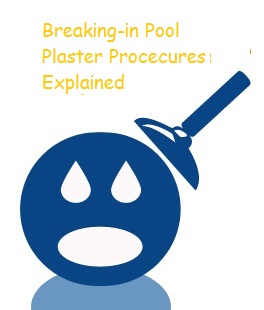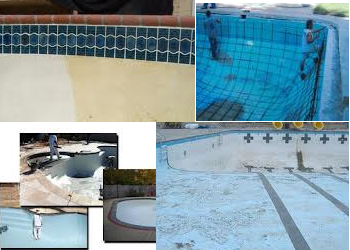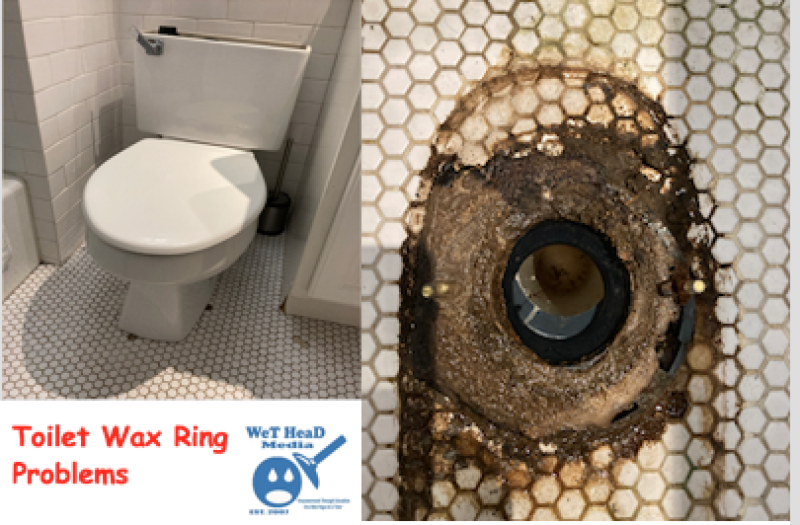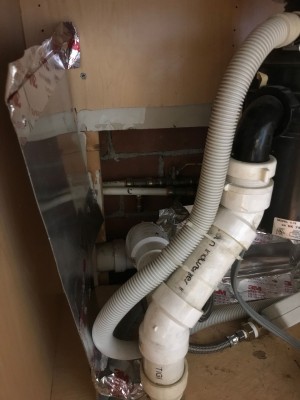Breaking-in Pool Plaster Procecures Explained
Whether it is a pool and spa that is newly constructed or an older vessel that is being replastered, the break-in (or start-up) of a new plaster job is very important, and you should hire the technician and the service contract if you don’t know what you’re doing.  Most builders subcontract the plastering and most plasterers don’t have the time to perform the break-in service. Therefore, they subcontract it to a local service company or recommend the technician directly to the pool owner.
Most builders subcontract the plastering and most plasterers don’t have the time to perform the break-in service. Therefore, they subcontract it to a local service company or recommend the technician directly to the pool owner.
With this in mind, it is obvious that new plaster break-in is one of the most important examples of your professionalism and knowledge of pool and spa maintenance as a pool owner. By following the procedures outlined here, without taking shortcuts, you will find new plater break-in to be one of most effective calling cards.
Why Break-in Plaster?
There are two basic reasons to break in plaster rather than just run on the pump and start swimming. First, you need to remove the plaster dust from the water, which will otherwise settle and build up as hard, rough scale. The pool is filled before the plaster dries, so the actual drying (curing) takes place underwater. Plaster shrinks somewhat as it dries, so if you allow the plaster to dry before filling the pool, the weight of the water against the brittle, dry plaster will cause it to crack. Adding the water before the plaster dries allows it to be pushed into place against the pool shell, pressed evenly by the weight of the water. It doesn’t shrink, become brittle, or crack.
By allowing this curing process to occur underwater, you are left with the by-products of the process to remove from the pool or spa. Plaster dust–calcium carbonate–will adhere to the surfaces of the pool as scale, especially noticeable in dark-colored pools. The curing process, called hydration, can take up to four weeks, but most of the excess plaster dust is removed in the first week if the break-in process is properly executed.
The second reason to break in the plaster is to balance the water chemistry so that the water itself does not destroy a good plaster job. Tap water is never exactly balanced to reflect the ideal chemistry components for pools and spas. Therefore, the break-in process is designed to create plater-friendly water that is neither etching nor scaling.
Procedure Approval
The break-in procedure is the same for a new pool or a replastering of an older pool. In either case, the most important first step is often overlooked. When approaching the break-in , it is always a good practice to confer with the pool builder and/or plasterer to outline your break-in and ask if they have any suggestions or preferences.  This collaboration is essential in keeping the builder and plasterer responsible for their work. If there are discolorations, delaminations, roughness, or other problems with the plaster, the builder or plasterer will almost invariably blame the break-in procedure, they will be more likely to accept responsibility for their construction and plaster work.
This collaboration is essential in keeping the builder and plasterer responsible for their work. If there are discolorations, delaminations, roughness, or other problems with the plaster, the builder or plasterer will almost invariably blame the break-in procedure, they will be more likely to accept responsibility for their construction and plaster work.
To accomplish this simple task, try to keep a step-by-step list of your own break-in procedures, detailing the brand names of chemicals used and daily break-in schedule. If you can arrange to have the builder and plasterer sign a copy of your procedure list, you will ensure their future participation in the warranty. At the very least, be sure a copy is delivered to them and keep notes of who you reviewed the procedure with, when you did so, and any comments they had.
Further, it is important to document that you followed the break-in procedure that was agreed upon. Keep a clipboard in the equipment area to list each action taken each day as the break-in proceeds. The notes should include the date, time, weather conditions, tes readings, and chemicals applied or actions take. Again, this insurance against anyone blaming your break-in for later plater problems.




Standard white plaster is the tried and true pool and spa surface finish. White plaster has been around as long as people have been building swimming pools and it remains a popular choice in spite of the myriad of options that have come into the market in recent years. It’s simple combination of white cement, white marble aggregate and water make for an economical choice that will give you that classic swimming pool look. However, you may want to reflect the colors of nature in your pool or spa with tinted pool plaster. With tinted pool plaster, you can achieve beautiful, consistent, lasting colors with high quality pigments for a unique, enduring finish.